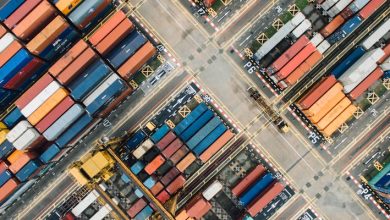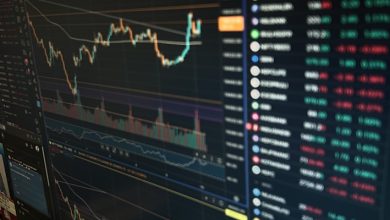The Role of Synthetic Assets in DeFi

- Understanding Synthetic Assets and their Importance in DeFi
- Exploring the Functionality of Synthetic Assets in Decentralized Finance
- The Evolution of DeFi: How Synthetic Assets Are Changing the Game
- Diving Deep into the Role of Synthetic Assets in the DeFi Ecosystem
- The Risks and Rewards of Utilizing Synthetic Assets in DeFi Platforms
- Innovation in DeFi: Harnessing the Power of Synthetic Assets for Financial Inclusion
Understanding Synthetic Assets and their Importance in DeFi
Synthetic assets play a crucial role in the decentralized finance (DeFi) ecosystem by offering users exposure to a wide range of traditional and digital assets without actually owning them. These assets are designed to mimic the value of the underlying assets they represent, allowing users to trade and invest in them on blockchain platforms.
Understanding synthetic assets is essential for participants in the DeFi space as they provide access to a diverse set of investment opportunities that may not be readily available in traditional markets. By leveraging smart contracts and oracles, synthetic assets can be created to track the price of commodities, stocks, cryptocurrencies, and other assets.
One of the key benefits of synthetic assets is their ability to provide liquidity and efficiency in the DeFi market. Users can trade these assets 24/7 without the need for intermediaries, enabling faster and more cost-effective transactions. Additionally, synthetic assets can be used for risk management, speculation, and hedging strategies, further enhancing the overall DeFi ecosystem.
Exploring the Functionality of Synthetic Assets in Decentralized Finance
Synthetic assets play a crucial role in the decentralized finance (DeFi) ecosystem by offering users exposure to a wide range of traditional and digital assets without actually owning them. These assets are created through smart contracts and are designed to mimic the price movements of their underlying assets. By exploring the functionality of synthetic assets in DeFi, users can benefit from increased liquidity, lower transaction costs, and enhanced diversification opportunities.
One of the key advantages of synthetic assets is their ability to provide access to assets that may be otherwise difficult to obtain or trade in traditional financial markets. For example, users can gain exposure to commodities, stocks, or even cryptocurrencies without the need to hold the physical asset. This opens up new investment opportunities and allows users to hedge against market risks more effectively.
Moreover, synthetic assets in DeFi are often more efficient and cost-effective compared to traditional financial instruments. By leveraging blockchain technology and smart contracts, users can trade synthetic assets 24/7 without the need for intermediaries or third parties. This not only reduces transaction costs but also ensures faster settlement times and increased transparency in the market.
The Evolution of DeFi: How Synthetic Assets Are Changing the Game
Synthetic assets have been a game-changer in the world of decentralized finance (DeFi). They have revolutionized the way traditional assets like stocks, commodities, and currencies are represented and traded on blockchain networks. The evolution of DeFi has been greatly influenced by the introduction of synthetic assets, which offer users the ability to gain exposure to a wide range of assets without actually owning them.
One of the key advantages of synthetic assets is their ability to provide access to assets that may otherwise be difficult to trade or invest in. This opens up new opportunities for users to diversify their portfolios and hedge against risk. Synthetic assets are also programmable, which means that developers can create new financial products and derivatives using smart contracts.
As DeFi continues to grow and evolve, synthetic assets are playing an increasingly important role in shaping the future of finance. They offer a way to bridge the gap between traditional financial markets and the decentralized world of blockchain. By allowing users to create and trade synthetic versions of real-world assets, DeFi platforms are democratizing finance and empowering individuals to take control of their own financial destinies.
Diving Deep into the Role of Synthetic Assets in the DeFi Ecosystem
Synthetic assets play a crucial role in the decentralized finance (DeFi) ecosystem by offering users exposure to a wide range of assets without the need for physical ownership. These digital representations of real-world assets are created using smart contracts and can mimic the value and behavior of traditional assets such as stocks, commodities, and currencies.
One of the key advantages of synthetic assets in DeFi is their ability to provide access to assets that may be otherwise difficult to obtain or trade in traditional financial markets. This opens up new opportunities for investors to diversify their portfolios and manage risk more effectively. Additionally, synthetic assets can be traded 24/7, allowing users to take advantage of market opportunities at any time.
Furthermore, synthetic assets can be used to create innovative financial products and services, such as decentralized derivatives and prediction markets. These instruments enable users to hedge against price fluctuations, speculate on future market movements, and earn passive income through yield farming and liquidity provision.
The Risks and Rewards of Utilizing Synthetic Assets in DeFi Platforms
Synthetic assets in DeFi platforms offer both opportunities and risks for users looking to diversify their portfolios. On one hand, these assets provide a way to gain exposure to a wide range of traditional and digital assets without actually owning them. This can be particularly appealing for investors who want to hedge against market volatility or access assets that are otherwise difficult to trade.
However, the use of synthetic assets also comes with its own set of risks. Since these assets are created through the use of smart contracts and other decentralized mechanisms, they are subject to potential vulnerabilities and security breaches. In addition, the value of synthetic assets can be influenced by factors beyond the control of the user, such as the solvency of the platform issuing the assets or market manipulation.
It is important for users to carefully consider these risks before incorporating synthetic assets into their DeFi strategies. Conducting thorough research on the platform offering the assets, understanding the underlying mechanisms of the synthetic assets, and diversifying across different types of assets can help mitigate some of these risks. By weighing the potential rewards against the risks, users can make informed decisions about whether or not to utilize synthetic assets in their DeFi activities.
Innovation in DeFi: Harnessing the Power of Synthetic Assets for Financial Inclusion
In the realm of decentralized finance (DeFi), innovation plays a crucial role in expanding access to financial services. Synthetic assets have emerged as a powerful tool for achieving financial inclusion by enabling users to gain exposure to a wide range of both traditional and digital assets without the need for ownership of the underlying assets themselves.
One of the key advantages of synthetic assets is their ability to replicate the price movements of the assets they are tracking. This allows users to participate in the value appreciation of diverse asset classes, including stocks, commodities, and cryptocurrencies, all within the DeFi ecosystem. By harnessing the power of synthetic assets, individuals who may not have had access to these markets before can now benefit from their potential returns.
Moreover, synthetic assets offer a high degree of flexibility and customization, allowing users to create bespoke financial products tailored to their specific needs. This opens up new opportunities for individuals to manage their risks and explore innovative investment strategies within the DeFi space. The ability to design unique synthetic assets based on different parameters gives users a greater level of control over their financial portfolios.
In addition to their versatility, synthetic assets also enhance liquidity in the DeFi ecosystem by enabling the creation of new trading pairs and markets. This increased liquidity not only improves price discovery but also enhances the overall efficiency of decentralized exchanges. As a result, users can trade synthetic assets with greater ease and at lower costs, further democratizing access to financial markets for a broader range of participants.
Overall, the innovative use of synthetic assets in DeFi represents a significant step towards greater financial inclusion. By providing access to a diverse array of assets, offering customization options, and improving liquidity, synthetic assets empower users to take control of their financial futures in a decentralized and accessible manner. As the DeFi landscape continues to evolve, the role of synthetic assets is likely to become even more prominent in driving financial innovation and inclusion.



